What is Sichuan pepper? What does it taste like? Is there a substitute? How is it used? How to judge its quality? Read my complete guide to this unique spice.
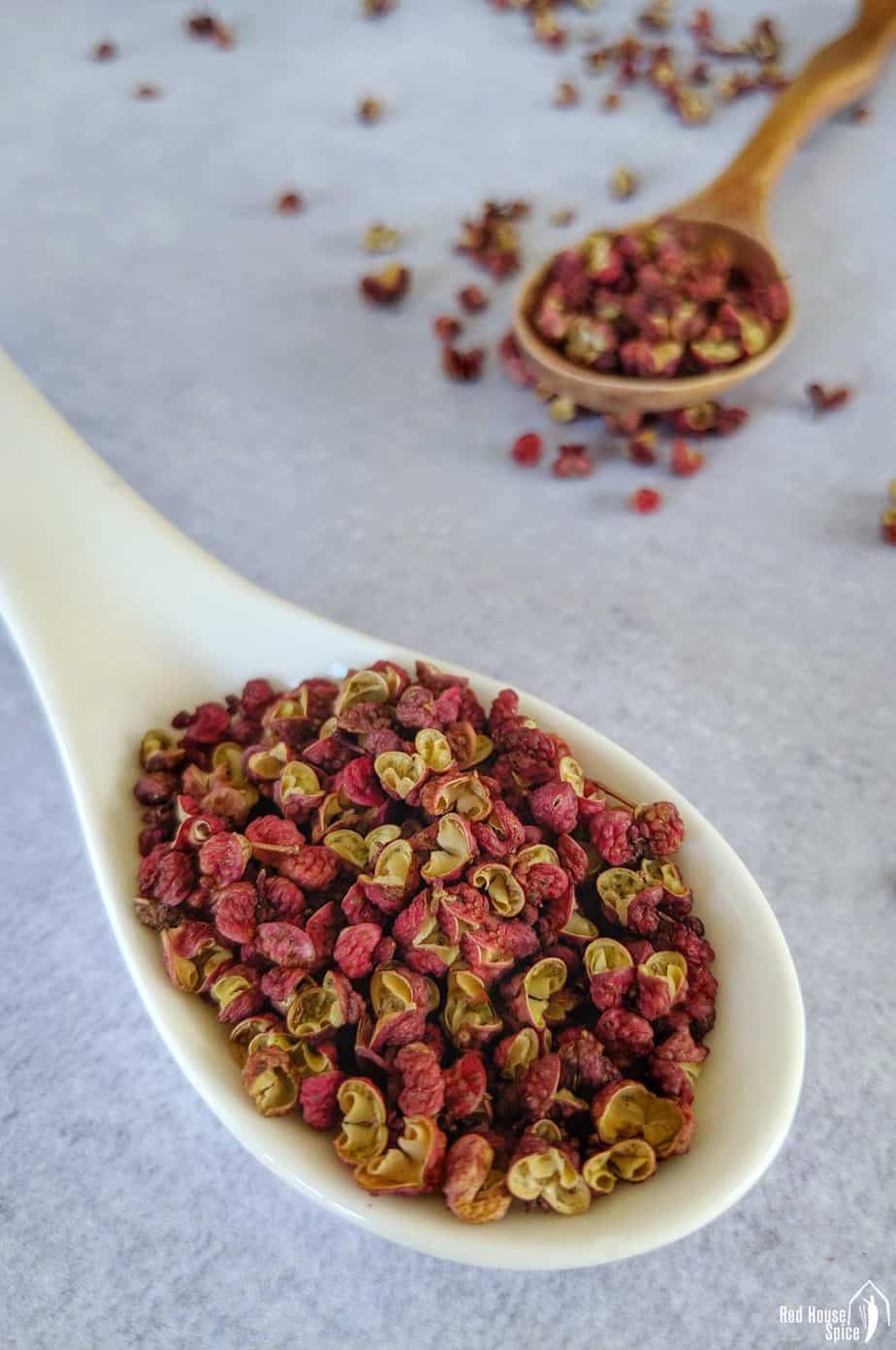
When it comes to Chinese cuisine, particularly Sichuan food, you can hardly miss a unique spice that gives numerous dishes an exciting zing: Sichuan pepper (花椒, Huā Jiāo). Based on the questions I’ve received from my readers, I’ve written a complete guide in Q&A form. I hope it will help you have a good understanding of this wonderful spice.
What is Sichuan pepper?
Sichuan pepper is the dried berry of a type of spiky shrub native to regions of Western China. Unlike its name suggests, it’s neither a pepper nor a chilli.
Unique to Chinese cuisine, it has been used as a spice since ancient times. It has a pinkish-red, pimply appearance and delivers a distinctive, mouth-numbing sensation known as Má/麻.
What are its other names in English?
Szechuan/Szechwan pepper, Chinese prickly ash, dehydrated prickly ash, Chinese pepper, rattan pepper (for the green variety), mala pepper, etc. They all refer to the same spice.
What is it called in Chinese?
The Chinese name for Sichuan pepper is 花椒 (Huā Jiāo). It literally means flower pepper, as the red husks that hold black seeds inside “bloom” like a flower when ripe.
The term “Sichuan” is not included in its Chinese name. So if you ask a Chinese person for “Sichuan pepper”, highly likely they wouldn’t know what you are talking about. Or they might think you are looking for chilli pepper which is widely used in Sichuan cuisine.
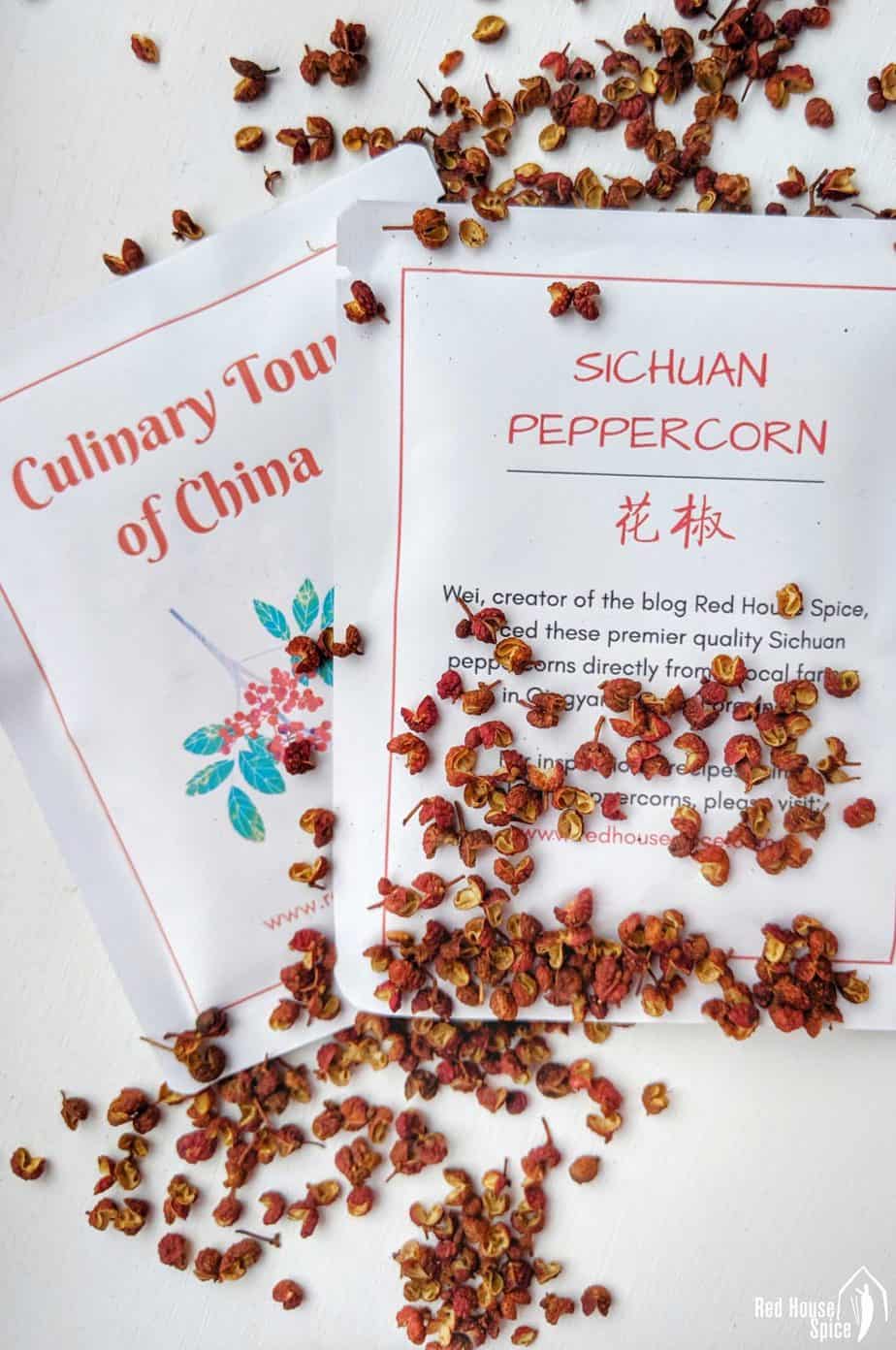
What does Sichuan pepper taste like?
It’s best to describe its taste in two dimensions:
- Flavour-wise, it has a citrus aroma plus an overtone of pine.
- Sense-wise, it creates a tingly, numbing sensation in your mouth. As Harold McGee describes it in On Food and Cooking: “they produce a strange, tingling, buzzing, numbing sensation that is something like the effect of carbonated drinks or of a mild electric current (touching the terminals of a nine-volt battery to the tongue).”
That is why in ancient times Chinese people used Sichuan peppercorn as a remedy to relieve toothache. Put a few on the offending tooth, then bite and hold. After a while, you won’t have a toothache, but instead an overwhelming numbing sensation (I can’t tell you which is less unpleasant. Have a try if you are curious!).
Is it hot like other peppers?
It doesn’t produce heat thus it doesn’t taste hot. Dishes that contain Sichuan pepper often taste spicy simply because it’s often paired with dried chilli pepper.
What is green Sichuan pepper?
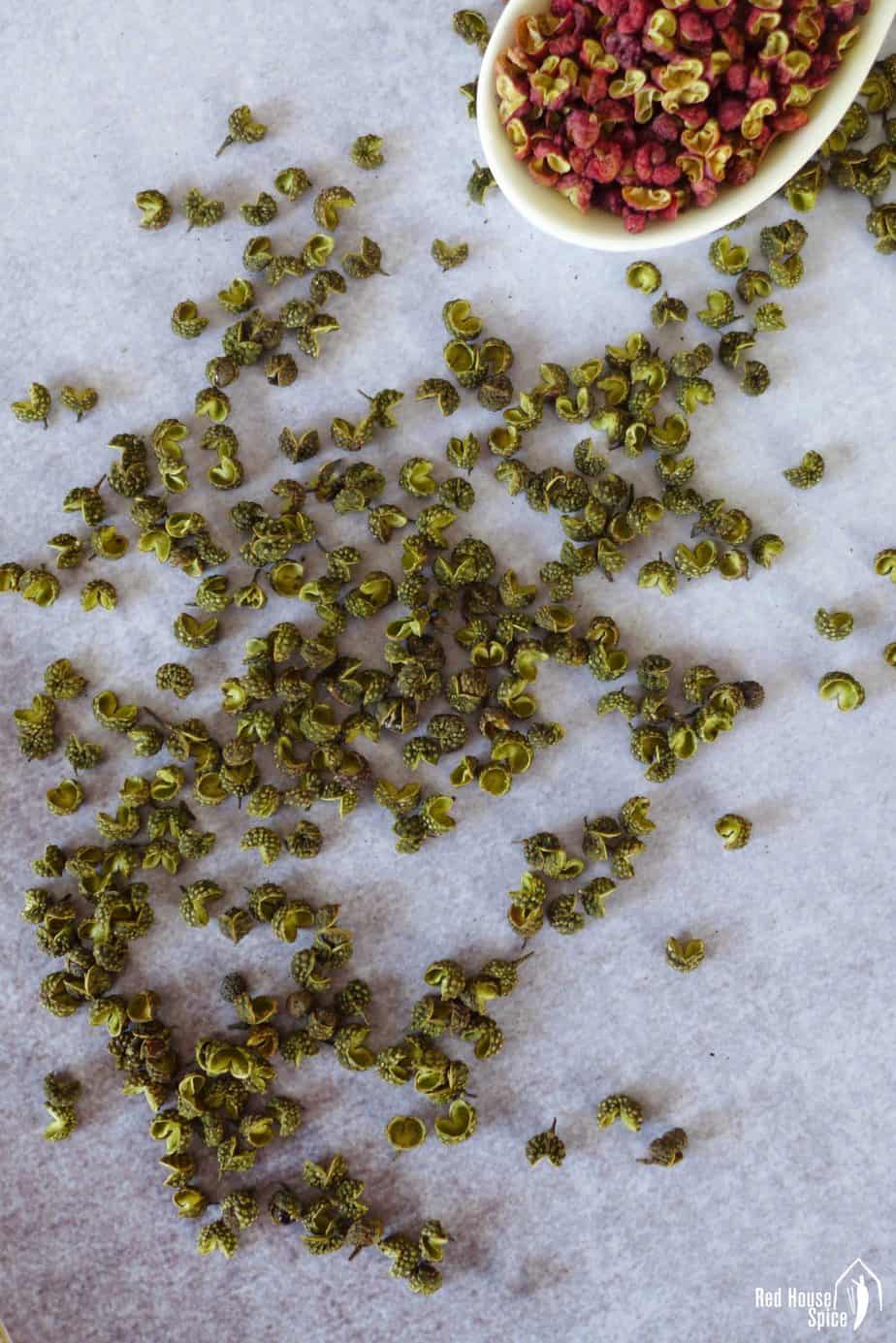
Green Sichuan pepper is a variety of Sichuan pepper that came to Sichuan culinary horizon in the late 90s. Unlike some people’s beliefs, it’s not the immature version of the regular red one.
Richer in scent, it has a very strong citrus smell but not much of a pine note. It also delivers a distinctive numbing sensation, but one which is slightly less intense.
What is Mala?
Málà/麻辣, meaning numbing and spicy, is a Chinese term describing the flavour profile created by the combination of Sichuan pepper and chilli pepper. It’s the iconic characteristic of Sichuan cuisine.
What is the substitute for Sichuan pepper?
There isn’t any substitute for Sichuan pepper. Some suggest that Tasmanian pepper, black pepper or coriander seeds can be good substitutes. If you have ever tasted it, I bet you wouldn’t agree with such a statement.
The powerful numbing sensation that Sichuan pepper creates makes it distinctive and unique. None of the other peppers delivers the same effect.
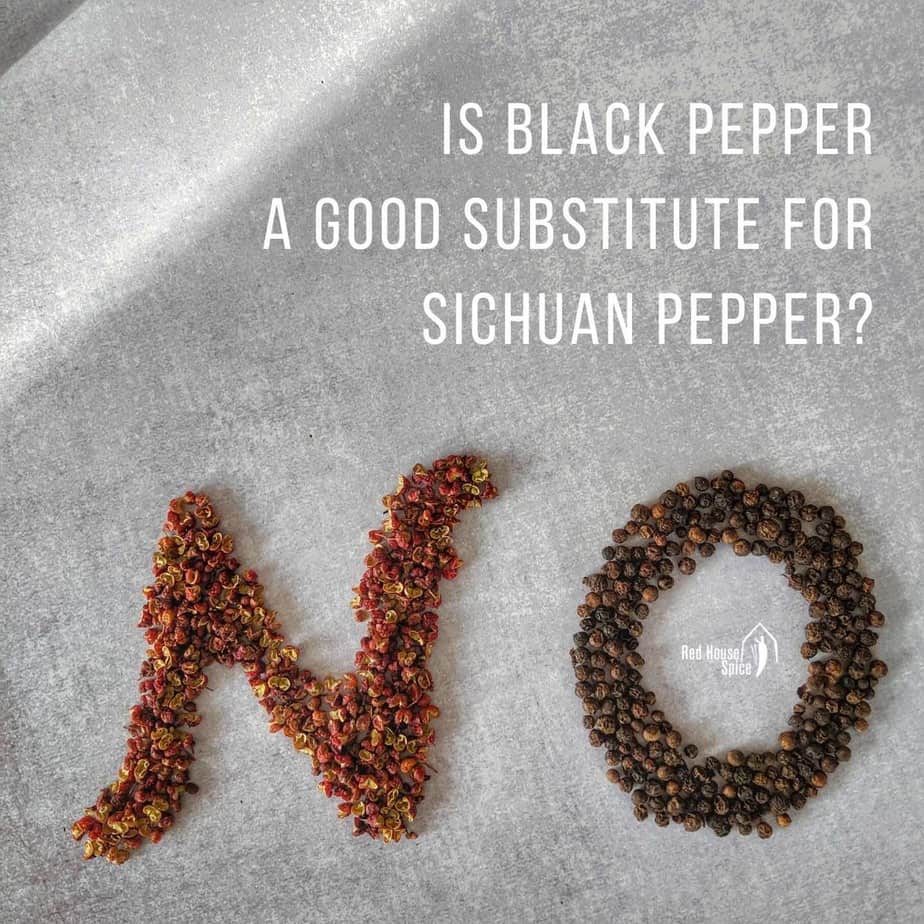
Can black pepper be a good substitute?
Not really. Sichuan pepper is not botanically related to black pepper. The former is a member of Rutaceae (known as the rue/citrus family). Whereas the latter belongs to Piperaceae (known as the pepper family). They don’t taste similar in any way.
What if a recipe calls for it but I don’t have any?
For some dishes in which Sichuan pepper doesn’t play an important role, you may simply omit it. But for dishes which stand out for their Málà /麻辣 flavour, the lack of Sichuan pepper will change the overall taste. Highly like the dish will still taste great but it loses its authenticity.
How to use Sichuan pepper?
Sichuan pepper has a firm position in the Chinese kitchen and it can be used in a variety of ways for numerous dishes. Essential to Sichuan cuisine, it’s also widely used in other Chinese regional dishes. Here is a list of cooking inspirations & recipes:
Use as whole
- Sizzle in oil for stir fry dishes (eg. Chinese potato stir fry/酸辣土豆丝)
- Pair with star-anise, Chinese cinnamon, etc. for braised dishes (eg. spiced beef & potato stew/土豆炖牛肉)
- For Sichuan style “water boiled” dishes: fry, crush then pour hot oil over (eg. Sichuan boiled fish/水煮鱼)
- Make the soup base of Sichuan/Chongqing style hot pot (火锅)
Use as powder
- Sprinkle over hot dishes (eg. Mapo tofu/麻婆豆腐)
- Mix in dressing for cold dishes (eg. Mouth-watering chicken/口水鸡, Bang Bang Chicken/棒棒鸡)
- Make seasoning for noodles dishes (eg. Dan Dan Noodles/担担面)
- Add to layered Chinese pastry (eg. Scallion pancake/葱油饼)
- Stir in dumpling fillings (eg. Great dumpling fillings/饺子馅 )
- Marinate meat to reduce its gamey smell
For making condiment
- Chinese five-spice powder, Wú Xiāng Fĕn/五香粉
- Chinese salt & pepper spice mix, Jiāo Yán/椒盐
- Sichuan pepper infused oil, Huā Jiāo Yóu/花椒油
Do you use the black seeds inside the husks?
No. They are hard, flavourless and have a gritty texture when crushed. Good quality Sichuan pepper should only have a few black seeds left inside the husks. If you wish to make your own powder, you need to manually remove the black seeds before grinding.
Do you eat whole peppercorns found in dishes?
Not normally. Whole Sichuan peppercorns are used to add another layer of flavour to the main ingredients. People usually don’t eat them as the numbing sensation they provide might be too strong hence they impair the overall taste of the dish.
How to grind it?
It’s very simple to grind Sichuan peppercorn: roast, crush then sift. Please refer to my blog post “How to grind Sichuan pepper correctly” for detailed instructions.
How much shall I use in a dish?
For most Chinese dishes, you only need to add small amounts. Usually, ½ teaspoon of whole pepper or ¼ teaspoon of ground pepper would be enough for a 2-serving dish.
That said, you might need to increase the volume if your Sichuan pepper has lost some of its freshness and doesn’t taste as potent as it should be.
Can I use it for sweet dishes?
Traditionally Sichuan pepper is used in savoury dishes and sometimes in sweet & salty pastry such as Jiāo Yán Bǐng (椒盐饼). In recent years, cooks/food enthusiasts have experimented using it in ice cream, cakes, cocktails, etc.
Is it healthy?
Having been used by Chinese as a spice for cooking for thousands of years, Sichuan peppercorn also plays a role in traditional Chinese medicine for healing indigestion, arthritis, diarrhoea etc. together with other plants/herbs. However, its nutritional benefit in food is insignificant as only very small amounts are needed and usually the whole peppercorns aren’t eaten.
How to buy Sichuan pepper?
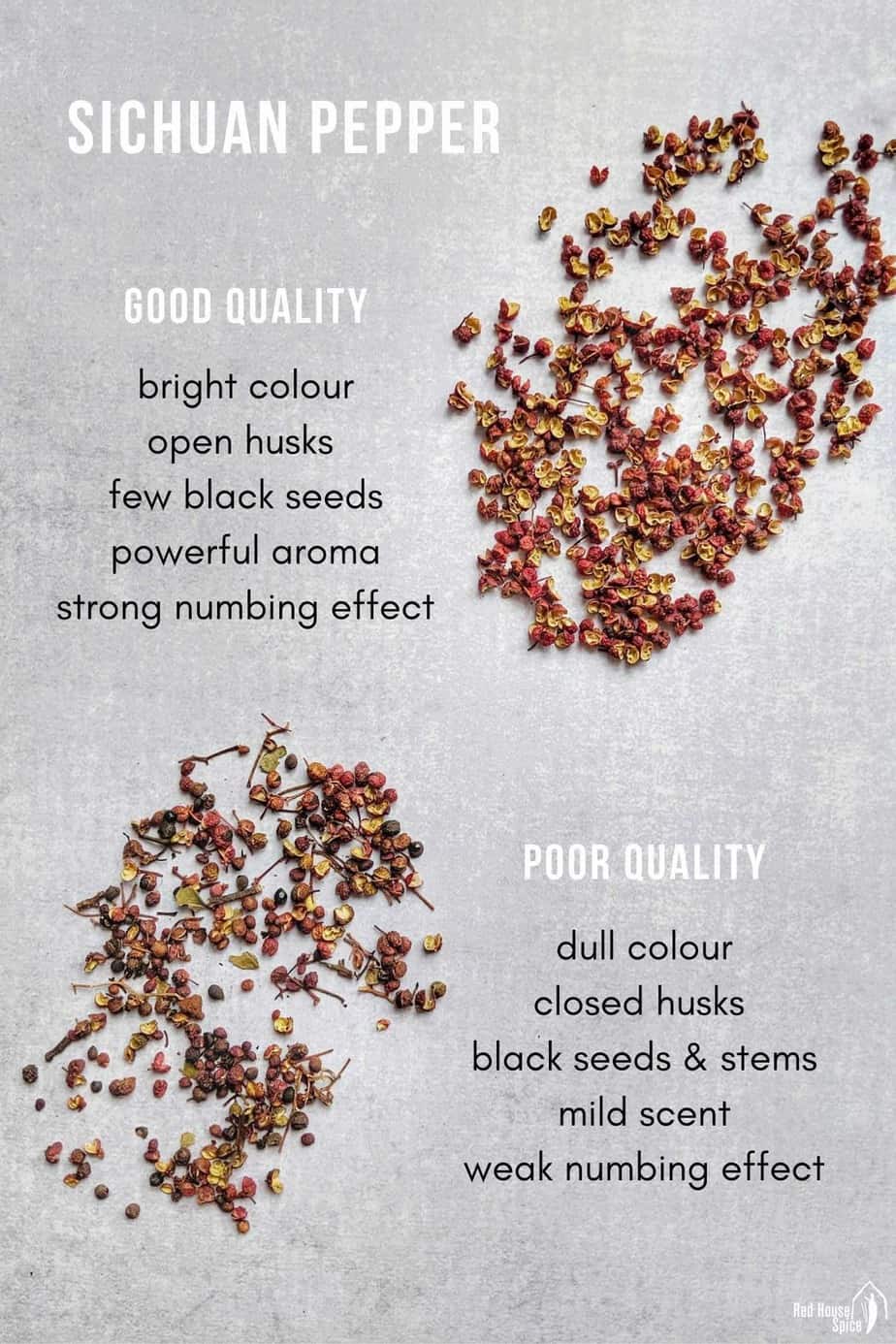
You can identify good quality Sichuan pepper by looking out for the following traits:
- Look: They are even in size and bright in colour. Husks open with very few black seeds left inside. Not many little stems attached.
- Smell: They have a powerful, enticing aroma. Rub a few peppercorns then smell your fingertips. The smell should be very noticeable.
- Taste: Chew one peppercorn. The tingling, numbing sensation should be strong and linger for several minutes in your mouth. No strange bitterness though.
Are there different varieties?
Yes. Depending on the region where it’s produced, Sichuan peppercorn differs in appearance, size and taste. The most famous varieties include “Hàn Yuán/汉源” from Hàn Yuán county in Sichuan, “Dà Hóng Páo/大红袍” from Wu Dū county in Gansu.
Where to buy it?
Sichuan pepper is available in most Chinese/Asian stores. Look for it in the spice section where you would also find star-anise, Chinese cinnamon, etc. Online shopping is another option.
Some major international spice brands now have it on their product line. So you may find it in mainstream supermarkets too. But I haven’t found any good ones. They are usually too mild in taste.
What’s the best place to buy when visiting China?
It is sold nation-wide at all types of food retail outlets. When possible, I suggest you hunt for it in local markets where you can touch, smell and taste the loose peppercorns.
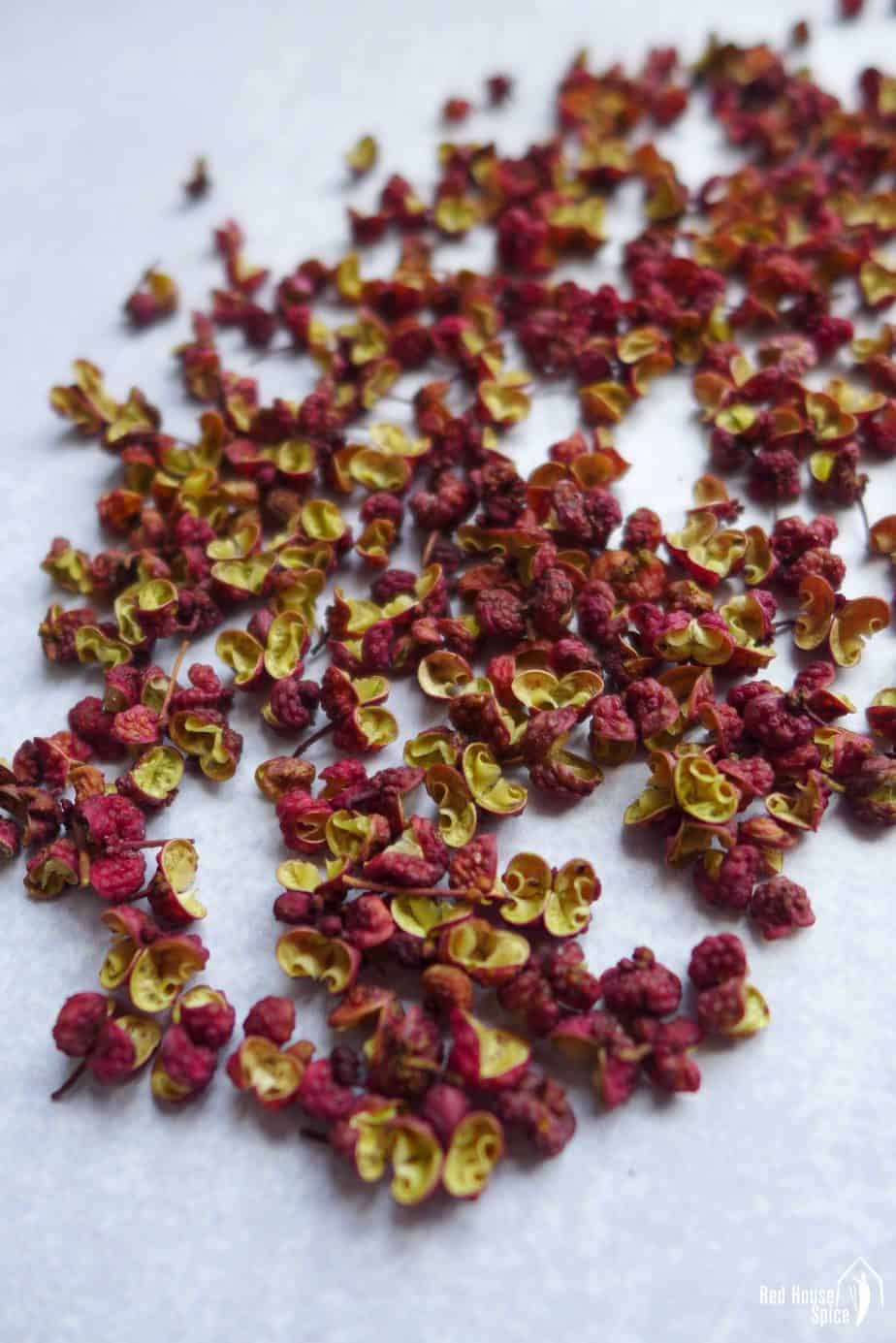
How to store Sichuan pepper?
It’s best to store Sichuan pepper in airtight containers/bags away from heat & direct sunlight. Due to its powerful scent, it’s advisable to keep it away from foods like tea and coffee.
How long does it last?
It doesn’t tend to go off but its aroma and numbing effect would decrease over time. Whole peppercorns could retain its quality for up to a year if stored properly. Ground pepper loses its taste more quickly so it’s advisable to finish it within 1-2 months (if making your own, grind a little at a time).


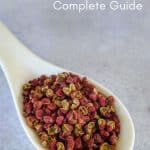
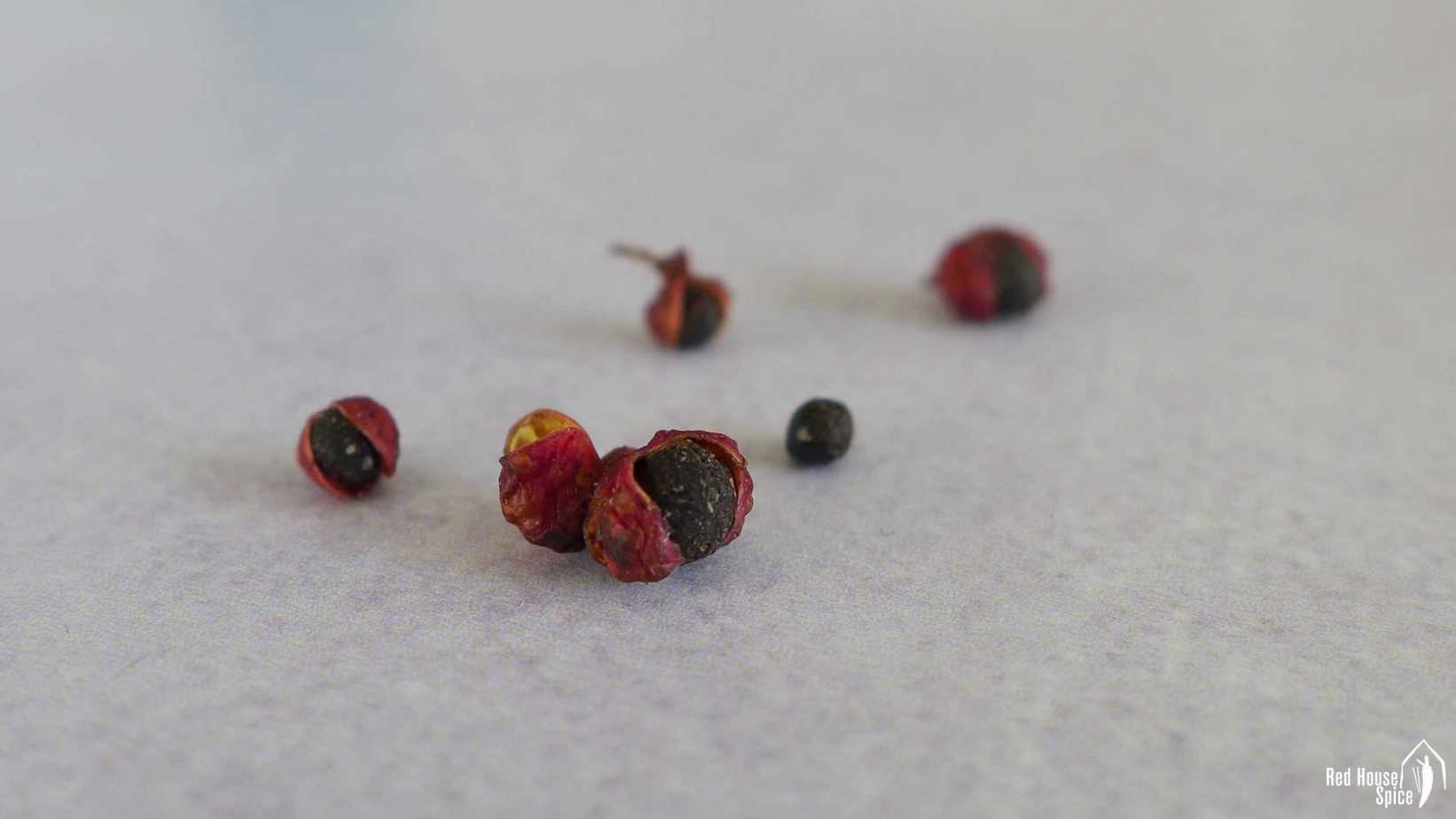
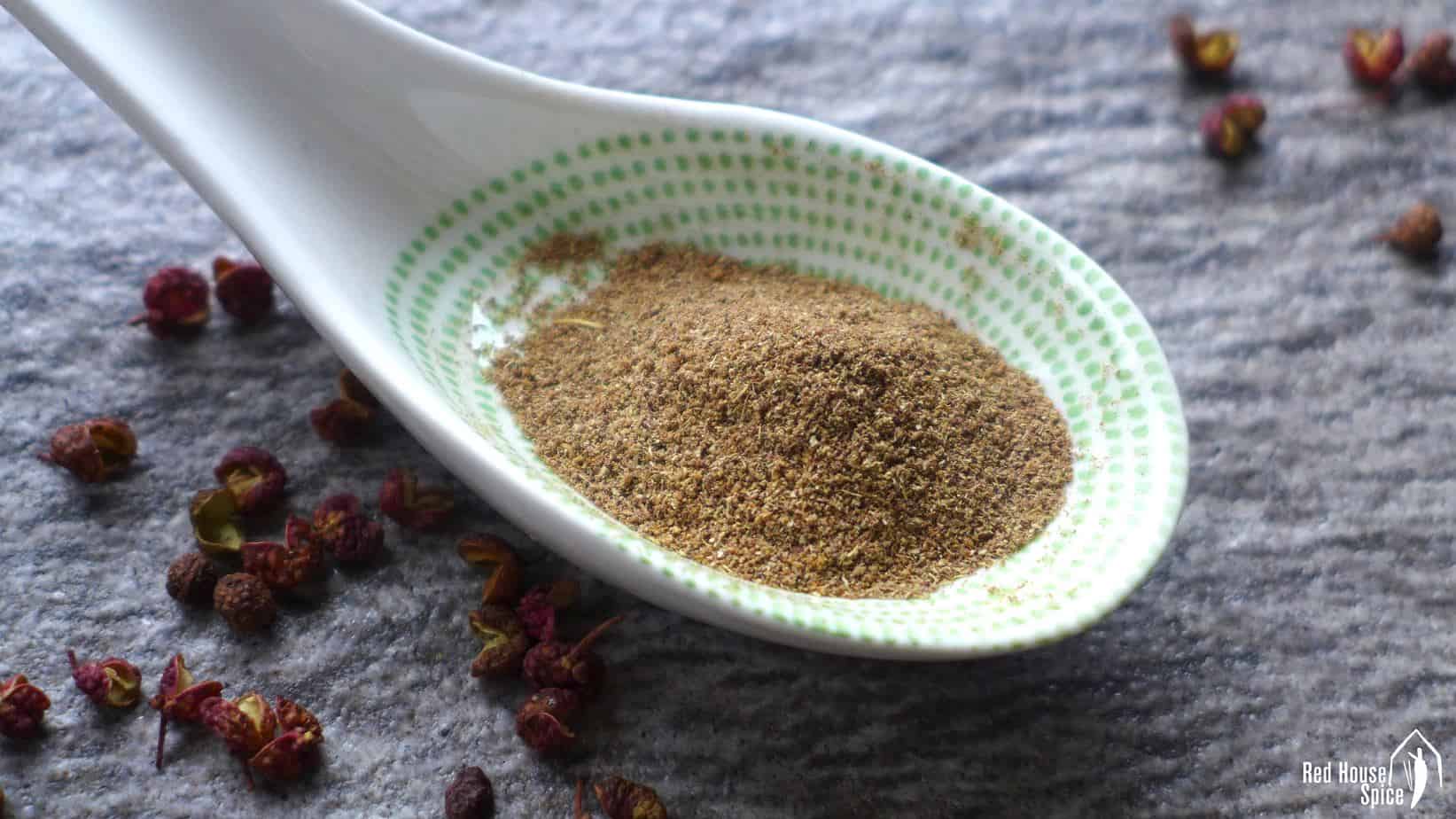
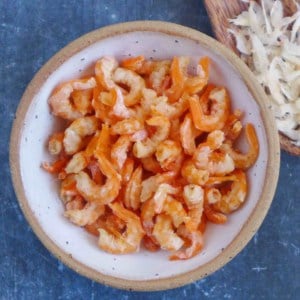
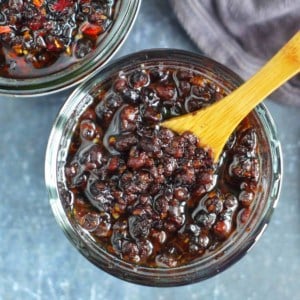
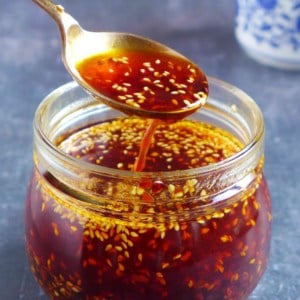
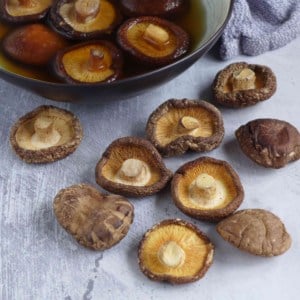
I bought Sichuan pepper from Penzeys in 2018 (their label is “Peppercorns China Szechuan”) – of excellent quality by your criteria (including the taste test). After reading your account of how to prepare it, I’ll try it. – I’ve also found a restaurant (Asia Kitchen in Knoxville TN) that serves málà dishes (I printed out the hànzì and used it to ask them).
Wikipedia has an excellent article on Szechuan pepper, including use of related species of Zanthoxylum in Japan, Korea, and Nepal), and and account of the chemistry and pharmacology.
Thank you for your excellent Web pages about it.
Such an informative article. I’m glad I found Red House Spice and look forward to learning much more about Chinese cooking.
Most informative on this unique ingredient/spice. Thank you so much for answering all of my questions. Just purchased red and green on line…can’t wait to use in my grilled shrimp salad tonight!! Think I might toast up a mix of the 2 for a nice blend.
Glad you find my guide helpful Linda. Enjoy your dishes with Sichuan pepper!
Hi Wi what is the best tofu to have
All types of tofu are great if used correctly. For example, it’s best to use firm tofu for Sichuan Braised Tofu. Soft tofu is preferred in Mapo Tofu. Whereas for Century Egg & Tofu Salad, silken tofu works the best.
Thanks for the education. I enjoyed reading.
My pleasure Samuel! Glad you find it helpful.
Isn’t 大红袍 (Big red robe) a variety of red tea produced in Wu Yi, Fu Jian Province (originally at the temple here where the emperor bestowed red robes to protect the tea bushes from cold after having been cured of an illness by the monks at the temple. Of course these days only clones of the original tea trees produce the tea as the originals are too old). What is the story behind the SiChuan pepper of the same name?
Incidentally I grow zanthoxylum bungeanum so have a ready supply of Hua Jiao. It’s one of my favourite spices.
In fact, you can find tea, Sichuan pepper and chili pepper named Da Hong Pao/大红袍 in China. I don’t really know the stories about naming Sichuan pepper and chili pepper. But thank you very much for sharing your knowledge about the tea.
Wei,
I was brought in India and now live US. I am just addicted to Sichuan Pepper. Schiuan food. Its hard to get authentic Sichuan foo in Denever, CO where I live. Though there is one or two resturants that delivery Sichuan or Mala Food. I am not sure if you know but Portugese who wre trading China took Sichuan pepper back to Goa, India. In Goa and surrounding areas Sichuan pepper is used extensively in fish curries. Its a star ingredient in fish curries. But its hard to find Indian style Sichuan peppers in Chinese grocery stores here . Although I had Indian style Sichuan peppers at Chinese hot pot restaurant here in Denver. But they couldn’t tell where they got them. I want to experiment with all varieties of Schiuan peppers that I can find. Unfortunately Chinese grocery stores in Denver only carry prickly ash and one other brown variety. But they don’t have very strong aroma the Sichuan pepper I brought form India has. I am sure there more better quality Sichuan peppers available in China. Can you let me know a website from where can buy multiple varieties of Sichuan Pepper. I liked your red boiled fish receipe.
Thanks
Hi Kshitji! It’s so interesting to know Sichuan pepper is used in Indian fish curry. It must be delicious! Have a look at the Mala Market which sells a collection of Sichuan spices.
The Mala Market has many products from Sichuan.
Thank you for your perfect description of the Sichuan Pepper. When we were in Chongqing, we had the hot pot for dinner. I was adventurous and actually chewed and ate the pepper. It was such an unusual experience. The gentleman who took us to the restaurant did tell me ahead of time the effects of eating the pepper. It was the best hot pot I ever had. Your article brings me back to that day. It is nice to know what it was called. I would love to have a hot pot recipe. Thank you again.
Very happy to know you find my post helpful. Yes, Chongqing has the BEST hot pot! I will put hot pot on my to-write list.
Thank you! I look forward to seeing the recipe.
Hello, I very much enjoyed your article. I certainly learned a lot about Sichuan pepper! I’m glad you posted the picture of good quality vs poor quality. I definitely bought poor quality! However that was the only option I had. I wonder if I can sprout and grow the black seeds as a house plant and conversation piece?
thank you for the great information.
Kathy
Hi Kathy! Very happy to hear you find this post helpful. It’s possible to grow Sichuan pepper but I don’t have much knowledge in gardening. Maybe this article by The Guardian has the information you need.
Do you have any recommendations for reputable brands/sources to find good quality peppercorns? Unfortunately, the only brand I can find at my local Asian market is quite poor quality.
Hi Lily! I know that The Mala Market sells Sichuan spices & condiments sourced from China. Otherwise, I don’t have any particular brand to recommend.